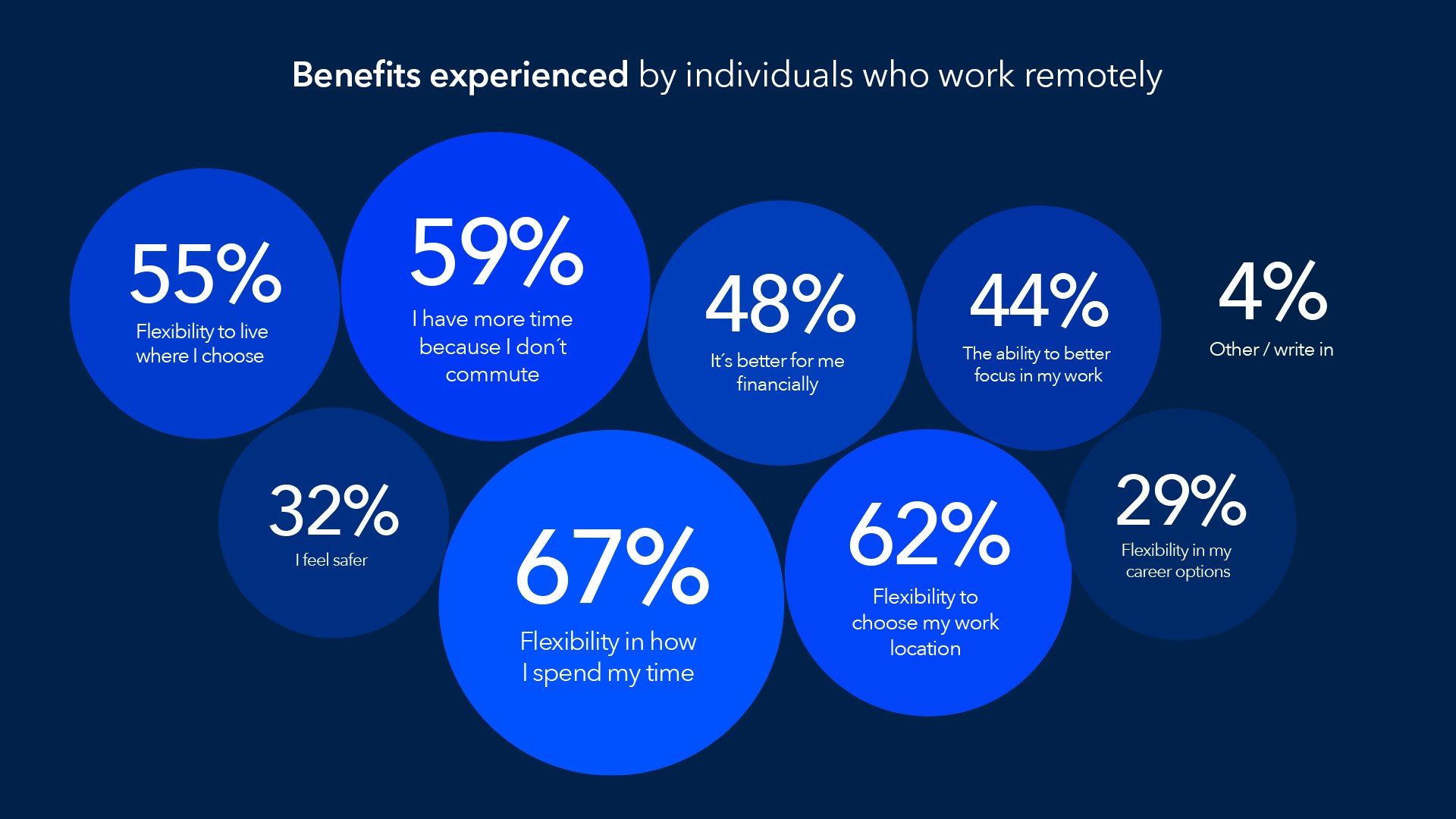Remote work ceased being a trend long ago; it is now one of the most sought-after qualities job seekers look for in any company. The numerous benefits it brings to the table have transformed it into an established working modality rather than just a preventive measure during pandemic times.
First and foremost, it offers flexibility and freedom to employees, enabling them to work from any location and effectively manage their work-life balance. According to a Buffer study, which has been tracking the state of remote work since 2018, states that people are 62% more excited about their job since they shifted to remote work. The same study reports that 97% of people recommend remote work to others, and the same number of employees want to continue working remotely until the end of their careers. As there are challenges the overall benefits this working flexibility enables, outweigh the concerns.

From an employee's point of view, this modality is a no-brainer. But as a company, how can you make it work properly and, most importantly, in the long run? Fostering a thriving remote work culture among a global team requires deliberate effort and consideration.
That's why we wanted to share 10 top strategies that have worked incredibly well for us and have allowed our company to keep growing!
1. Set clear expectations
Clearly define expectations regarding work hours, availability, deadlines, and deliverables. Ensure that team members understand their roles, responsibilities, and goals. By providing clarity, you promote accountability and help remote workers stay on track.
2. Communication and transparency are key
Establish clear and open lines of communication to bridge the geographical and cultural gaps. Use various communication tools, such as video conferencing, instant messaging, and project management platforms, to facilitate collaboration and keep everyone informed. Encourage transparent and frequent communication to ensure that all team members feel included and connected.

3. Encourage collaboration and knowledge sharing
Create opportunities for collaboration and knowledge sharing within the remote team. Utilize collaborative platforms and tools that enable sharing of ideas, best practices, and resources. Encourage team members to contribute their expertise and provide opportunities for cross-functional collaboration.
4. Recognize and celebrate achievements
Acknowledge and appreciate the accomplishments of remote team members. Celebrate milestones, project successes, and individual achievements. Recognize their efforts publicly, such as through team-wide emails or virtual shout-outs, to foster a sense of validation and motivation.
5. Foster team bonding
Despite the physical distance, it's important to foster a sense of camaraderie and connection among team members. Organize virtual team-building activities, such as online games, virtual happy hours, or informal chat sessions, to encourage personal interactions and build relationships. Encourage sharing of non-work-related interests and create channels for socializing.

6. Continuous learning and professional development
Support remote team members' professional growth by offering learning and development opportunities. Provide access to online courses, webinars, or virtual workshops to enhance their skills and knowledge. Encourage sharing of learning resources and foster a culture of continuous learning within the team.
7. Feedback and performance management
Implement regular feedback mechanisms to provide guidance and support to remote team members. Conduct regular performance reviews, set goals, and provide constructive feedback to help them grow professionally. Encourage two-way feedback, where team members can also share their insights and suggestions for improvement.
8. Support well-being and work-life balance
Remote work can blur the boundaries between work and personal life. Encourage a healthy work-life balance by promoting regular breaks, flexible work hours, and setting boundaries around availability. Encourage self-care and provide resources for mental health and well-being support.

9. Embrace diversity and inclusion
Emphasize the value of diversity and inclusion within the remote team. Foster an inclusive environment where all team members feel valued and respected, regardless of their cultural backgrounds or geographic locations. Encourage diverse perspectives, ideas, and contributions.
10. Lead by Example
Every leader in your team needs to demonstrate the behaviors and values they expect from their remote team. Be accessible, supportive, and empathetic. Encourage open communication, collaboration, and work-life balance. Your actions set the tone for the remote work culture and influence how team members interact and engage.
Furthermore, by fostering a culture that promotes collaboration, engagement, and well-being among your global team, you create an environment where employees thrive. A thriving remote work culture prioritizes employee well-being and work-life balance, leading to increased job satisfaction, reduced stress levels, and improved overall mental and physical health. When employees feel supported in balancing their personal and professional lives, they are more likely to be loyal, productive, and committed to their work.
By implementing these strategies and prioritizing the well-being of your remote team, you create a positive work culture that not only benefits the individuals but also propels the organization to new heights of success. It's a win-win situation where employees feel valued and supported, and the company thrives in a highly productive and engaged workforce.


